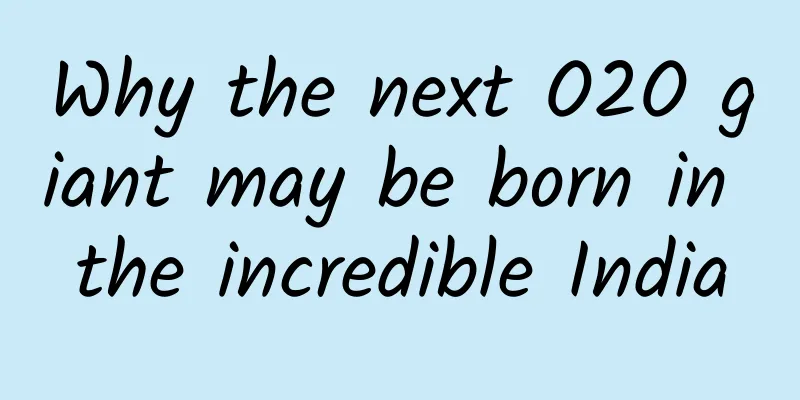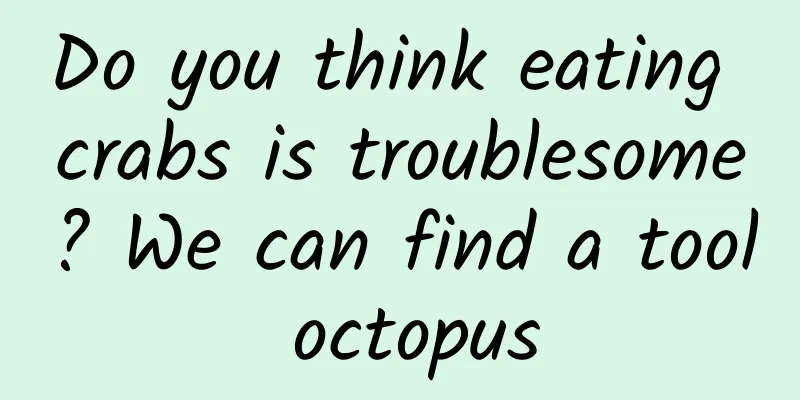Why the next O2O giant may be born in the incredible India

|
From the rising waves to the undercurrent, "Incredible India" is becoming a gateway for capital and major companies from all over the world to bid for investment. E-commerce, payment, smart phones and all industries related to mobile Internet are now showing a trend of turning into a red ocean of business because of these "moneybags" coming from all directions. However, this still does not prevent India, a market with the potential to be the next "Chinese miracle", from harboring the ambitions of many companies to start a "second spring" in their careers. Especially for Chinese Internet companies, entering a long period of slow growth is a common situation they are currently facing, so the Indian market is particularly important. However, the business relationship between China and India is not just a forced one-way relationship because the two countries have more similarities. In addition to accepting the input of capital or enterprises, the mobile Internet path that China has already taken may just be a lesson for India. For example, Meituan and Ele.me, which have already entered the second half, have extremely valuable reference significance for the Indian O2O industry, which is in a state of instability and has not yet reached its peak. Based on the development trend of domestic O2O catering, will India's O2O catering platform also maintain a three-legged situation? Will it also fall into a decline period after the rapid expansion? Moreover, will India give birth to the next industry giant, or even an Internet giant that is expected to win over local life services? These questions are also worth discussing. Can an Indian version of Meituan emerge from Swiggy, Zomato and Foodpanda? China's O2O competition has gone from capital pursuit to decline, from life-and-death struggle to mutual support. This short-term dramatic conflict or development has Chinese characteristics, which is actually quite puzzling to many foreign companies and may also make this model difficult to replicate. However, it is undeniable that it is in the process of this rapid expansion that China's O2O platform has formed its own advantages and consolidated its foundation. This shows that as long as the fruits ripened by capital can eventually take shape, simple and crude methods may also be effective. Looking at this process, we can find that mergers and acquisitions or strong mergers are one of the important quick ways, and the Indian O2O catering market now also values this method. For example, in just about a year from 2014 to early 2015, Zomato continuously acquired New Zealand restaurant search service company MenuMania, Czech Lunchtime.cz, Slovakia Obedovat.sk, Italian catering O2O website Cibando and American catering O2O company Urbanspoon. It can be said that its overseas market development is almost entirely carried out through mergers and acquisitions. In addition, Swiggy and Foodpanda are also seeking to acquire or merge small platforms, hoping to suppress the other two competitors through scale advantages. However, this way of piecing together business territory and integrating resources tends to develop in a gradual manner. Looking back at the landmark event that marked the qualitative change in my country's O2O market, it was undoubtedly the merger of Meituan and Dianping. The current situation of the Indian O2O market is quite similar to that before the merger: the three-legged pattern has not yet stabilized, and other platforms are eager to move while competing for the top position in the market. So is it possible for the small probability event of rivals becoming one to happen in India? Will it become the next Indian version of "Meituan"? To answer this question, we need to consider the specific market environment. The merger of Meituan and Dianping was influenced to some extent by the money-burning war. After all, they still did not win an overwhelming victory despite the huge losses, so it was better to merge the two and become the leader. Although there are also money-burning subsidies in the Indian O2O market, it is far less tragic than the situation in my country at that time, mainly because the financing of these platforms cannot support large-scale money burning. According to Cheetah Lab ( formerly Cheetah Global Think Tank )'s survey and analysis of the food delivery markets in the United States, India, and China, the financing amounts of Chinese and Indian food delivery platforms can be described as worlds apart. In the figure, except for Foodpanda, a European food delivery startup incubated by Rocket Internet and acquired by Delivery Hero, which has received hundreds of millions of dollars in investment from its parent company, the other two local companies have hardly ever received more than $100 million in financing. Even Swiggy, which recently received $80 million led by Naspers, can hardly be compared with Chinese food delivery platforms that easily raise billions or billions of dollars, so it is indeed difficult to engage in a money-burning war without scruples. Furthermore, the Indian food delivery market experienced a period of rapid development in 2015 and a capital winter in 2016. The money-burning war has subsided, and the current actions of these platforms are more inclined to recuperate and consolidate the existing market. Therefore, in India, the external pressure of burning money and losses is far less serious than that in my country at that time. The three equally matched parties certainly have little urgency to merge, and it is difficult to develop another "Meituan". Moreover, India's catering O2O has not yet reached maturity, whether in terms of distribution system or one-stop service. At this time, acquiring some smaller platforms with market potential may also increase the chances of becoming the industry leader. For example, Zomato and UberEATS are both planning to acquire Runnr, a food delivery startup. If either party succeeds, Runnr's advantages in logistics distribution and attracting financing will be a major boost to its future development. In conclusion, the current situation of the Indian O2O market has not yet shown any stimulus to promote strong alliances, which means that it is unlikely that a fierce battle will be followed by a sudden handshake and peace. Lessons from China's O2O money-burning war for India For China's catering O2O platforms, almost half of the credit for the industry's rapid development and current market share is due to subsidies. Although India does not have such a large amount of capital for excessive consumption, it is also using subsidies to acquire users as much as possible. According to reports, Swiggy's losses in fiscal year 2016 were 1.37 billion rupees ( about 137 million RMB ), with an average monthly loss of 130 million rupees; Foodpanda's losses in fiscal year 2015-2016 were 1.42 billion rupees, a four-fold increase from 360 million rupees in the previous fiscal year. The reason behind these large-scale losses is naturally the free shipping and other user subsidies implemented at the beginning, so from this perspective, the drawbacks and defects that have emerged in China after the money-burning melee can also serve as a reference for Indian catering platforms. First, the money-burning melee caused my country's O2O market to fall into homogeneous competition prematurely. After the capital retreated, this trend exposed the consequences of low user loyalty and increased customer acquisition costs, and this situation has not improved much to this day. According to Cheetah Lab's analysis of Chinese and Indian food delivery apps, although the major Indian platforms started late and have a short history, their active penetration rate and per capita opening times are even slightly higher than my country's three major food delivery platforms. This may indicate that India attaches much more importance to the construction of differentiated platforms than my country. For example, Swiggy built its own delivery system. Based on data algorithms and route tracking and other technical means, the average delivery time for each order on the platform is only 37 minutes, making it the food delivery platform with the shortest delivery time; Zomato is committed to one-stop service experience and early layout of overseas markets, and its business has spread to 23 countries; Foodpanda avoids the fierce competition in core cities and focuses on second-tier cities and small cities in India, and has achieved good results. It can be seen that India's O2O platforms are looking for their own unique competitive advantages, which can avoid the development of homogeneity to a certain extent. Second, although the speed of logistics delivery determines the consumer experience of the platform, more consideration is needed in the choice of delivery method, especially the choice of building a self-delivery system. Indian O2O catering platforms can learn relevant lessons from Meituan, Ele.me and Baidu Waimai. Merchant delivery, crowdsourcing and self-operation are the main modes of delivery at present. In order to seize the initiative as much as possible, most platforms in my country tend to operate by themselves or crowdsource. For example, Fengniao, a subsidiary of Ele.me, has created a shared economy-style instant delivery, while Meituan focuses on building a self-operated delivery system. However, for Meituan, the huge self-operation costs have become an increasing burden on the loss of food delivery, and its dismissal of a large number of delivery employees has further confirmed the risks of self-operation itself. Audit data on Meituan’s financial situation show that in December last year, Meituan’s delivery costs for takeout were as high as 930 million yuan, of which self-operated labor costs probably accounted for 20% of the total cost. Moreover, the self-operated income was 116 million yuan, not counting station rent, vehicle wear and tear, water and electricity and other expenses. After deducting the 180 million labor costs alone, the monthly loss of self-operated delivery reached 64 million yuan, and the total for the whole year was 768 million yuan. It can be seen that Meituan’s recruitment of a large number of delivery personnel in a short period of time has led to an excessively high proportion of self-operated delivery, which has laid the root cause for a series of layoffs and vicious incidents today, so Swiggy India should be as cautious as possible against such foreseeable risks. Third, as we all know, the gap between Meituan and Tencent has become a hidden danger for Meituan due to the third-party payment platform. This also shows the importance of controlling the payment platform. Although such an attempt in my country will inevitably affect the interests of giants, making it difficult to implement, the current situation of mobile payment in India has given platforms more opportunities to participate in this competition. As far as the current situation is concerned, Paytm, MobiKwik and FreeCharge, backed by giants, have already launched a war of financing and burning money. Telecom service providers led by Reliance Jio and major banks have also set their sights on this piece of cake and have successively made efforts. However, this has confirmed that the pattern of this field is unstable. O2O platforms at least have the opportunity to use the platform development to intervene in the market competition of mobile payments, thereby providing more possibilities for future development. India may have taken the globalization route earlier than us. Regardless of the source of financing and business expansion, the competition among my country's O2O platforms has always been limited to the domestic market. Only after the money-burning war ended did all parties begin to plan to go global. On the contrary, capital participants and direct competitors in the Indian market have entered the market as early as the early stages of development. This determines that India may be more suitable for a global route. This can be confirmed by the development of Zomato and Foodpanda. On the one hand, although Foodpanda, a company that has been in business with catering giants, once experienced a recession, it received huge financing after being acquired by Delivery Hero, which is enough to prove that foreign capital is eager to find opportunities in the Indian market, and it also indirectly proves that the integration of local and foreign has promoted the pace of globalization. On the other hand, Zomato has already expanded beyond India in 2012, expanded its business to the Middle East, Africa, South Asia and South America in 2013, acquired in Europe in 2014, expanded its business to 19 countries, and completed the acquisition of Urbanspoon, the second largest platform in the US market, in early 2015, becoming a direct competitor of Yelp. As can be seen from the above figure, the proportion of overseas market business has reached 26.76%, among which the neighboring emerging markets in Southeast Asia have already established a user base, so the future globalization route will still be Zomato's most distinctive differentiation banner. Of course, the business roots of the three major Indian platforms are still in the local market. Especially as more and more international companies flock to the Indian catering industry, the accelerated pace of competition has forced them to face an increasingly severe competitive environment, which is also an inevitable result of globalization. For example, Google launched the food delivery app Areo in India last month, trying to enter the online food ordering market, while the taxi app Ola has also tried its hand in the catering industry, having previously launched online catering apps Ola Cafe and Ola Store, mainly in second- and third-tier cities, but its trial was ultimately unsuccessful and the app was shut down at the end of last year. However, this does not prevent these industry giants from entering the catering market, especially the news that Uber recently entered the Mumbai food delivery market, which has brought considerable pressure to the three-legged market structure. On the one hand, in the global market, UberEATS's services have expanded to 26 countries and 78 cities. These practical experiences have proved that companies can use the connectivity between taxi apps and life services to extend the industrial chain. More importantly, it also provides experience for it to develop emerging markets in India. On the other hand, the best way for Indian catering O2O platforms to improve user experience and cultivate user loyalty is delivery speed, which is precisely one of UberEATS's major advantages. By using the same map routing algorithm as Uber and strengthening regional logistics planning and management, it can effectively speed up car delivery and deliver food to customers' homes in a shorter time. Therefore, it is undoubtedly a better choice compared to local platforms whose delivery systems are not yet mature. In short, if Indian catering platforms want to go further on the road of globalization, they should build on a more solid foundation in the domestic market. Otherwise, seeking far-flung opportunities will undoubtedly shake the foundation of their business and lose their local advantages. India's mobile network is far from being universal, and Chinese capital or enterprises have not even entered the Indian catering market. All these signs may indicate that India's O2O market has not yet reached a real climax, which means that everything is possible. In addition, given the potential market value in India, should Meituan and Ele.me also make plans for their overseas trips early? As a winner of Toutiao's Qingyun Plan and Baijiahao's Bai+ Plan, the 2019 Baidu Digital Author of the Year, the Baijiahao's Most Popular Author in the Technology Field, the 2019 Sogou Technology and Culture Author, and the 2021 Baijiahao Quarterly Influential Creator, he has won many awards, including the 2013 Sohu Best Industry Media Person, the 2015 China New Media Entrepreneurship Competition Beijing Third Place, the 2015 Guangmang Experience Award, the 2015 China New Media Entrepreneurship Competition Finals Third Place, and the 2018 Baidu Dynamic Annual Powerful Celebrity. |
<<: Hyundai Motors brings a hydrogen fuel cell car with a range of 800 kilometers
Recommend
The dishes you must not forget to eat in autumn are suitable for weight loss and sugar control
When it comes to beautiful vegetables in autumn, ...
How to operate an event (Part 2)
How to operate an event (Part 1) To operate produ...
Electronic power steering may suddenly fail. Geely will recall 40,000 Borui vehicles
Recently, Zhejiang Geely Automobile Co., Ltd. fil...
520 confession posture, programmers all do this...
Counting with fingers Today is 520 Love Confessio...
Disassembling the core parameters of home projectors, choosing a projector with three-color laser light source in mind
There is no doubt that this is the era of the exp...
Even 8G of memory can’t support it, why is Android killing background processes more and more serious? How much memory is enough?
[[376707]] The Android system has now entered the...
Beauty content marketing trends on Tik Tok, Kuaishou, and Xiaohongshu!
During Q2 2020, what new trends are there in cont...
If they want to "go shopping" during the day, they have to "explode"! The "survival wisdom" of slugs
Produced by: Science Popularization China Author:...
Using Domain Events in Microservices
If we think back to the working principle of compu...
Vocational skills training advertising plan!
With the continuous high-quality development of m...
See how 8 industry-leading brands interpret the effectiveness of information flow advertising
In recent years, information flow ads have become...
Hammer T2 detailed parameters announced: main camera parameters revealed
Smartisan Technology has announced that it will o...
Brand Marketing: Analyzing the marketing failures of Durex and KFC!
If you are good at marketing, you will have a gre...
Optimize information flow by following these 4 steps to increase game payment rate!
Does the poor payment of games have nothing to do...
Windows 10 can run Android apps directly, but it requires a Samsung phone
Apple has a complete ecosystem covering desktops,...









